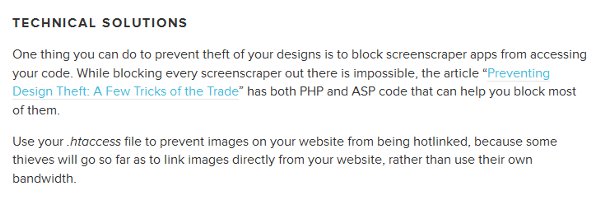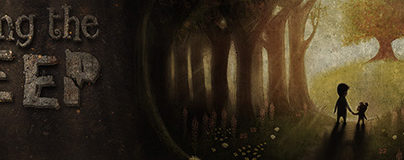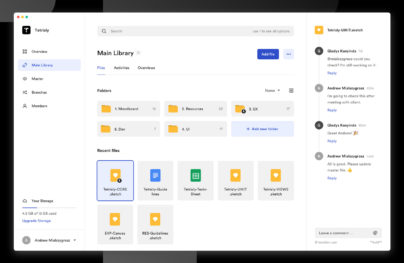How to Protect Your Design Work on the Internet
Are you worried about people stealing your designs after you publish them on the web?
Web designers are faced with a “catch 22” situation. To attract new clients, they must showcase their work and put it on display on the internet. Yet, by doing so, they are more vulnerable to thievery. The possibility of people taking their work and re-publishing it or using it for their own gain without giving the author attribution is a grim reality.
It’s all too easy for internet users to click and save a graphic and insert it into a blog or website without the creator even knowing it is happening.
Inspiration vs. Stealing
Have you ever been told your work “inspired” someone when you know they stole it?
There is a fine line between inspiration and stealing. On one hand, your design can inspire someone to create a completely unique piece. Yet, in other cases, a fellow web designer may borrow elements of your design and “change it up” into a different graphic. The offender may cite inspiration as the main reason and defend the fact that it is different from the original. Regardless of what the person says, you will know the truth.
This is a common occurrence with designers who are not skilled enough to complete a job. They swipe elements from existing designs hoping the client won’t notice.
With Postcards Email Builder you can create and edit email templates online without any coding skills! Includes more than 100 components to help you create custom emails templates faster than ever before.
Free Email BuilderFree Email TemplatesYou know this is stealing even though it can be misconstrued as inspiration.
With so many loopholes it is difficult to keep track of your designs and keep them protected.
Good Intentions
Many people who re-post graphics are not aware of the illegal nature of their actions. People think that the internet and its images are available to anyone who wants them.
I have witnessed many people who run high-performing blogs take images from a random Google search and use them on their websites. Many were not even aware it was a legal issue.
In other cases, people will “steal” designs that don’t have any copyright information stated. They do not realize that an image is copyrighted material once it is published, regardless of the lack of statements surrounding it.
The Problem
As a web/graphic designer, it can be disheartening and frustrating to see your work published without ever receiving the notoriety from it. Those images and designs are your babies and they deserve proper respect and attribution, not to mention stealing them is a direct violation of copyright law.
What do you do when you notice someone stealing your work?
Fighting copyright issues can turn into a huge mess. Thankfully, simple communication can thwart a potential battle, especially if the offender was unaware of copyright laws. However, in other more serious cases, designers will simply throw in the towel due to a lack of money and resources to fight.
With Startup App and Slides App you can build unlimited websites using the online website editor which includes ready-made designed and coded elements, templates and themes.
Try Startup App Try Slides AppOther ProductsProtect Your Work
Do you have a team of legal experts ready to prosecute people who steal your work? Unless you have the budget of Amazon.com, this is not a likely scenario. Most freelance web designers do not have thousands of dollars to spend on legal assistance should anyone steal their content, so they must devise ways to protect their work and prevent it from misuse.
There are many actions you can take to protect your work online. While not all will be 100% successful, they will definitely tip the scales in your favor.
Copyright disclaimers – Consider posting a notice of copyright or “all rights reserved” on your website where visitors can see it along with a statement describing the illegal nature of stealing your work. It may not stop every perpetrator, but it will notify those who are unaware of copyright laws about stealing content and also scare others into submission. It’s similar to posting an alarm sign in front of your house to deter thieves from entering. Even if you don’t have an actual alarm system, the thought of possibly getting caught is enough to deter them.
Watermarks – Watermarks are a good deterrent and can prevent people from stealing your images. Designers typically do not like changing the look of their designs with watermarks, but many feel they are the best deterrent to theft. Some resort to a small signature and website logo on the bottom of the design as well.
Copyscape – Use Copyscape to search for duplicate content online. I use the service regularly to assess whether my writers’ content is unique, and also to check the duplication of my personal content.
Smashing Magazine offers these helpful tips:
Take Charge With Licensing
When you post your creative work online, copyright laws help to prevent the copying of your work and control its distribution.
If an individual steals your design and uses it for an ad, it is a direct violation of copyright law. The action is also in question if the individual incorporates the copyrighted work to create a derivative without your permission.
Even though these actions are against the law, people continue to steal, and creative professionals find it taxing to run after thieves whenever they suspect foul play. So, instead of hiding their creative designs, they solve this problem by allowing the public to use their work under the terms they set forth. This is what we refer to as licensing.
Licensing makes your creative work available to the public so you can control its distribution. Licensing also deters copyright infringement and sends thieves off to steal other images not protected by a license.
As the copyright holder, you can control the use of your design work. Certain licenses allow widespread use as long as the person credits the author. Other licenses exert tighter controls on copying and derivative works.
Creative Commons is one of the most popular open source licenses for creative professionals. It offers three layers of licenses that anyone using the internet can understand.
When you use licenses to protect your work, you still own all the copyrights, but you allow people to use your work as you deem acceptable.
The Licenses
1. Attribution
Attribution is the most lenient of the licenses. It allows others to use and distribute your work and create derivatives as long as they give you credit.
2. Attribution NonCommercial
Under this license, people can use and tweak your work and copy it only for non-commercial use provided they give you credit.
3. Attribution-ShareAlike
This license is similar to the open source software license in that any new work created from your original work must be licensed in the same manner. People who use or revamp your work for commercial purposes must credit you and all derivatives will carry the identical license. Wikipedia uses this license.
4. Attribution-NoDerivs
When you opt for the “no derivatives” license, you permit people to redistribute your work as long as they do not change it or modify it in any way. The graphics and images must remain unchanged and the publisher must give you credit.
5. Attribution-NonCommercial-ShareAlike
This license is similar to the Attribution-ShareAlike; however; it prohibits the use of your work for commercial purposes.
6. Attribution-NonCommercial-NoDerivs
For those web designers seeking the most restrictive license, this one is ideal for you. It prohibits the use of your work for commercial purposes. People can download and share your images if they credit you, but they cannot alter them.
The Licensing Decision
Before you decide which license to use, you must answer two questions…
1. Do you want to allow people to use your work for commercial purposes?
The definitions for commercial vs. non-commercial are still somewhat confusing. The technical term for “commercial” involves using images for the purpose of selling or to gain profit. Non-commercial refers to using images for personal use and not to gain profit.
The definition becomes ambiguous when a publisher wants to use an image for his blog that includes advertisements. Is the image used to draw in revenue? Some would say “yes” since it is part of the blog and the blog contains advertisements, which relates to commercial usage. Others would argue that the image isn’t directly involved in any for-profit activity and is, therefore, noncommercial usage. The jury is still out on this one and Creative Commons is actively taking surveys on the subject to further define the terms.
If you do not want your images used by companies seeking to gain profit from them, stick to the non-commercial licenses.
2. Do you want to allow people to create derivative works?
The United States Copyright Act defines “derivative work” as:
A “derivative work” is a work based upon one or more preexisting works, such as a translation, musical arrangement, dramatization, fictionalization, motion picture version, sound recording, art reproduction, abridgment, condensation, or any other form in which a work may be recast, transformed, or adapted. A work consisting of editorial revisions, annotations, elaborations, or other modifications which, as a whole, represent an original work of authorship, is a “derivative work”.
The derivative work is a piece created from the original. If you want to maintain your original graphic and keep the image unchanged as it is copied, choose the NoDerivs licenses.
Creative Commons has this helpful License Chooser which will also supply you with code to put on your website. Here are some tips you should know before licensing your work.
Below are some other resources that explain more about copyright laws:
United States Copyright Office
Design Theft – The Webmaster’s Resource
Copyright Explained: I May Copy it, Right?
Has anyone ever stolen your graphics? Do you use licenses to protect your work?
Disclaimer: I am not a lawyer and the advice in this article is for informational purposes only and should not be taken as professional legal advice. If you have any questions about copyright laws, please speak to a lawyer knowledgeable in the subject matter and the particular laws of your state or country.








